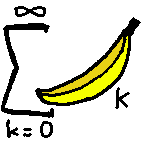| Commit message (Expand) | Author | Age |
|---|
| * | Feature to add passive components to a section as fixed locks (for level cros... | orwell | 2024-12-03 |
| * | Misc Fixes found during play | orwell | 2024-12-01 |
| * | Make Buffers become implicitly their own TCBs and signals when interlocking i... | orwell | 2024-11-25 |
| * | Add Blocksignal mode for signals to autocreate simple block route | orwell | 2024-11-14 |
| * | Support signal aspect selection for routes again | orwell | 2024-07-20 |
| * | Fix working of the legacy signals under new system | orwell | 2024-05-24 |
| * | Connect the ropes, start on making the UI work | orwell | 2024-05-23 |
| * | Merge branch 'new-ks-orwell' into route_prog_rework | orwell | 2024-04-08 |
| |\ |
|
| | * | Continue with new-ks rework | orwell | 2024-04-05 |
| | * | Implement primitive distant signaling | Y. Wang | 2023-03-23 |
| | * | Record signal aspect to avoid excessive get_aspect calls; report testing cove... | Y. Wang | 2023-03-23 |
| * | | Implement routesetting incorporating tscache, other improvements | orwell | 2024-01-28 |
| * | | Signals can have nil name, documentation on route def | orwell | 2023-12-17 |
| * | | Implement RS cache, per-track-section caching of route locks. This will later... | orwell | 2023-10-15 |
| * | | Fix map, fix train placing | orwell96 | 2023-05-27 |
| * | | TCB Xlinking added, to make nonconnected crossings possible | orwell96 | 2023-05-27 |
| * | | Auto-Repair Track Sections/TCBs (automatically when adding/removing or trigge... | orwell96 | 2023-05-27 |
| * | | Add TrackIterator interface as a common framework for walking along tracks (a... | orwell96 | 2023-05-27 |
| |/ |
|
| * | Interlocking: Correct duplicate influence points semi-automaticallyrelease-2.4.0 | orwell96 | 2021-11-14 |
| * | Signal influence points: Make sure to clear on removal of signal, clear orpha... | orwell96 | 2021-03-12 |
| * | Fix things, rework signal aspect select dialog, transform old aspects on-the-fly | orwell96 | 2021-02-10 |
| * | Fix removing stale TCB nodesrelease-2.2.0 | orwell96 | 2021-01-12 |
| * | Forbid track modification when train, IP or TCB is on it, better handle remov... | orwell96 | 2020-10-07 |
| * | Do not throw error when sync_tcb_neighbors fails | orwell96 | 2019-08-29 |
| * | Fix moving Signal IPs (no duplicate IPs) | orwell96 | 2019-02-21 |
| * | Fixes regarding signal assignments/tcbs | orwell96 | 2019-02-09 |
| * | Point speed restriction rails | orwell96 | 2019-01-24 |
| * | Fix may_modify_section on newly created sections | orwell96 | 2019-01-22 |
| * | Prohibit removing/changing of TCBs and sections while routes or signals are set | orwell96 | 2019-01-22 |
| * | Do not print "couldn't determine section" warning when all traverser ends wer... | orwell96 | 2018-10-29 |
| * | Miscellaneous routesetting fixes | orwell96 | 2018-10-29 |
| * | Properly implement invalidate_all_paths, recheck lzb on aspect change | orwell96 | 2018-10-10 |
| * | Add signal safety control override, restructure control system | orwell96 | 2018-10-10 |
| * | Make signal influence point (~halt point) specifiable | orwell96 | 2018-10-09 |
| * | Improve route programming: | orwell96 | 2018-10-07 |
| * | Move passive API to the advtrains core | orwell96 | 2018-08-16 |
| * | Automatic working (re-set certain route on train pass) | orwell96 | 2018-08-12 |
| * | Implement routesetting | orwell96 | 2018-07-21 |
| * | Basic route management from signalling formspec | orwell96 | 2018-07-04 |
| * | Signal assignment and route programming procedure | orwell96 | 2018-07-04 |
| * | Implement trains blocking sections | orwell96 | 2018-06-29 |
| * | get_ts_at_pos(), file for train-related stuff | orwell96 | 2018-06-29 |
| * | Complete Track Section handling, incl. removing tcb's and marker entities | orwell96 | 2018-06-26 |
| * | Add track section concept and rework TCB design, implement new linking behavior | orwell96 | 2018-06-21 |
| * | Add Track Circuit Breaks (TCBs), Database and Track Circuit Setup | orwell96 | 2018-06-20 |
| * | Interlocking: Create demo signals, signal API and model for TCB configurer node | orwell96 | 2018-06-19 |
| * | Draft of interlocking system | orwell96 | 2018-06-14 |

